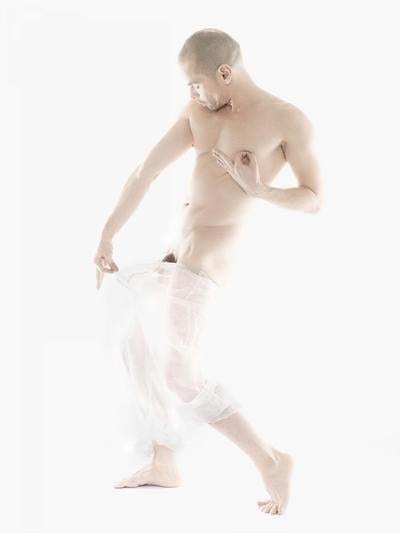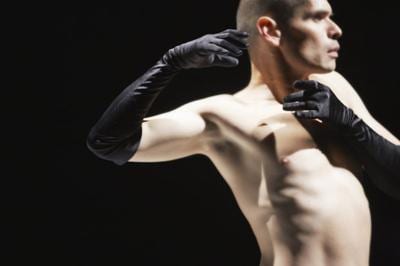
All photos by Valerie Simmons, courtesy Compagnie Flak.
José Navas left his home in Caracus, Venezuela in 1988 with a one-way plane ticket to New York City and $200 in cash. Now, almost a quarter-century later, the Montreal-based Navas has developed a reputation as one of Canada’s most-loved dancers.
Make no mistake, his parents love their son and his husband, McGill associate law professor Robert Leckey. But when Navas returns to Venezuela to visit his parents, the family doesn’t discuss his incredible international success.
“The parents look the other way,” says Navas. “I think it has something to do with the fact that I left with an ambitious dream, and when it happened, it confronted them with something. I honestly don’t know what it is.”
His new 3D dance film, ORA, received a delirious ovation at the Toronto International Film Festival (TIFF) last fall. National Film Board filmmaker-in-residence Philippe Baylaucq collaborated with Navas on a visually breathtaking film shot entirely with infrared thermal-imaging cameras.
“The acclaim at TIFF wasn’t a surprise because we knew we had something special,” Navas says. “The film is simple and elegant and had never been done before. It’s always an interesting exercise as a dancer to work with filmmakers because you have to give away a lot of control. It’s nourishing, but it’s also nerve-wracking because you’re used to calling the shots and now you’re just another piece in the machine.”
And the 47-year-old Navas says he has no plans to retire from the stage anytime soon. “It’s bizarre how I have less injuries and pain today,” he says. “My body is more efficient. I’m reaching my peak at 50.”
And his dancecard is full. His new hour-long solo piece, Personae, premieres in Montreal in January, then moves to Ottawa’s National Arts Centre in March. Then in May, his full-length piece, Bliss, opens in Vancouver, where he is resident choreographer of Ballet BC.
Navas came out at age 11 and was long bullied by kids at his elementary school in Venezuela. Which is why – in addition to his busy dance schedule – he says he plans to establish a charitable foundation to help gay youth.
“I spent so much time thinking about committing suicide between the ages of nine and 11,” he says. “After my third suicide attempt, I was so scared about the whole thing I had to talk to my parents. The moment I spoke with someone – with my parents and then later with my friends – it transformed into understanding. So I think sharing your fears with people who understand helps. I then realized there are other people like me. But despite the internet and new technology, it isn’t easier for young gay kids to come out today. That’s why we all need to talk about this, [and] one of [my] plans is to create a foundation that will help young gays and young artists succeed.”


 Why you can trust Xtra
Why you can trust Xtra


